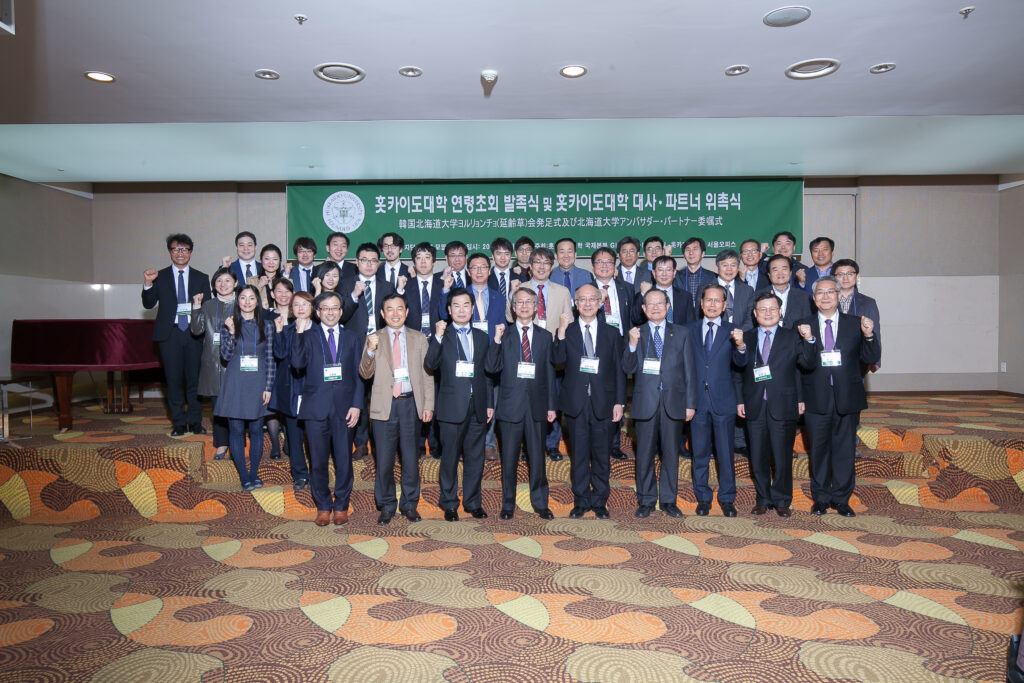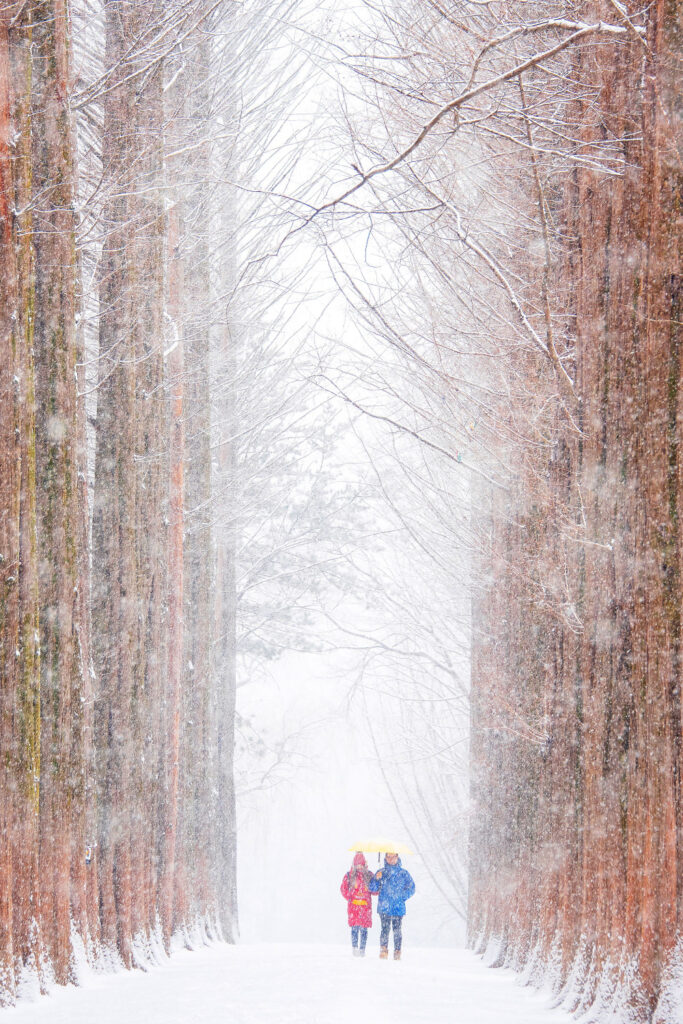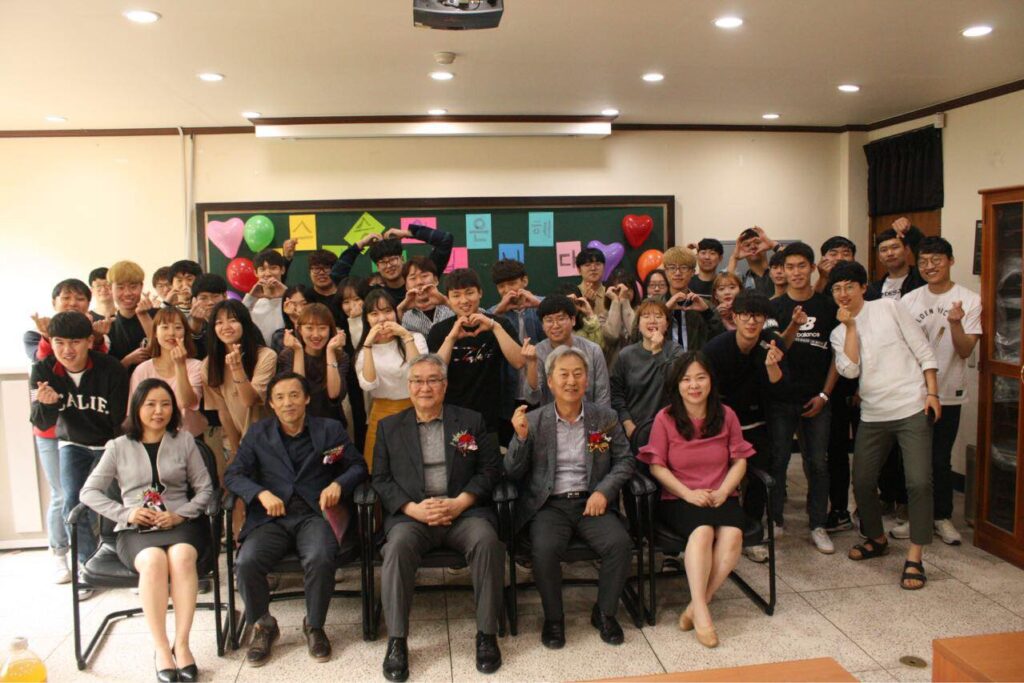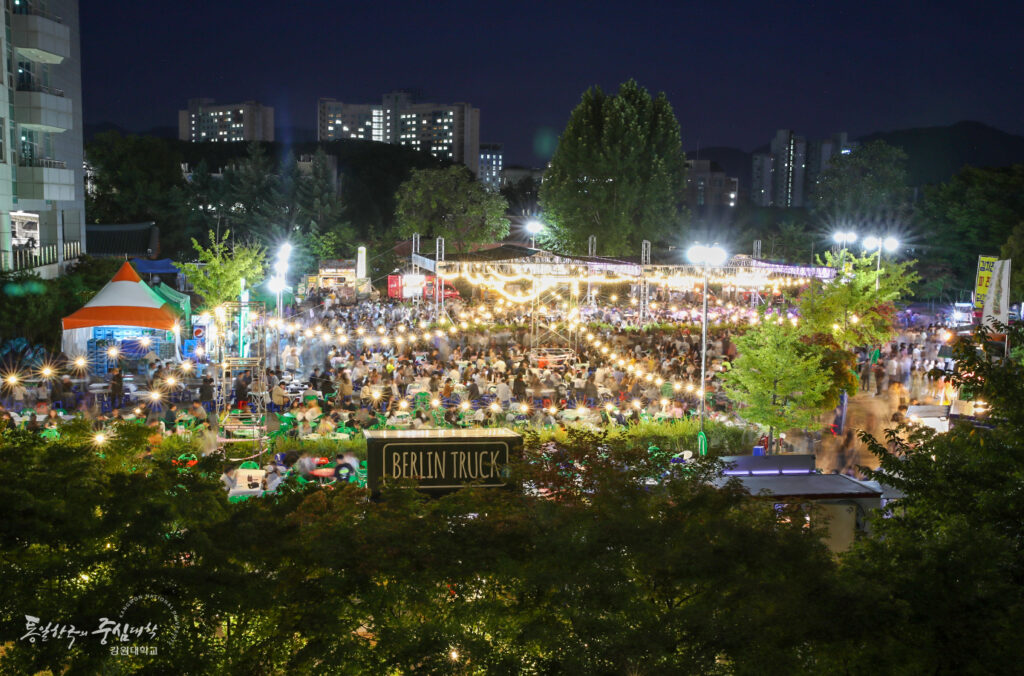This article was published in the Autumn 2020 issue of Litterae Populi. The full issue can be found here.
Dr. KunWoo Chun
Professor, Division of Forest Science, College of Forest and Environmental Sciences, Kangwon National University
Appointed as a Hokkaido University Partner in April 2016
I learned about the HU Ambassador and Partner System in 2015 from Professor Joo-Young Cha, the then-director of HU’s Seoul Office, and I am honored to have been inaugurated as an HU Partner at the appointment ceremony in Seoul in April 2016. I was also appointed as the first president of the Korea Yeonlyeongcho Association of Hokkaido University at its kickoff ceremony on the same day. The association is a new alumni group consisting of HU Ambassadors and Partners in South Korea. These appointments have made me feel truly honored and pleased with the opportunity to return the favor to all those at HU who helped me out in the past.

The inaugural ceremony of the Korea Yeonlyeongcho Association of Hokkaido University and the appointment ceremony for HU Ambassadors and Partners (April 2016).
I belonged to the Laboratory of Erosion Control Engineering at the Hokkaido University Graduate School of Agriculture for four years from 1983: one year as a research student, and three years as a doctoral student. The wide-ranging guidance I received in those years from my supervisor, Professor Saburo Higashi, regarding the origin and direction of erosion control engineering laid the foundations for my 33-year academic life. Most notably, the idea of comprehensive erosion control, as opposed to erosion control simply based on analytical interpretations of data, has been a beacon for my research.

A row of Metasequoia (dawn redwood) trees on Nami Island in the North Han River in a suburb of Chuncheon City, where Kangwon National University is located, is known as a location for the popular Korean television drama Winter Sonata. (Photo credit: Chuncheon City).
To stay grounded in that idea after returning to Korea, I visited the laboratory every year and received guidance from professors Tohru Araya, Tomomi Marutani and Takashi Yamada. I also received instruction from Professor Futoshi Nakamura and Professor Shoichi Kimura at the Laboratory of Ecosystem Management. (Professor Kimura is an HU alumni and currently a professor at Gifu University.) Further, I have encouraged many of my students to study at HU.

HU Partner KunWoo Chun with students on South Korea’s Teachers’ Day (May 15).
Although Chuncheon City, where I live, is at a much lower latitude than Sapporo, the two cities are similar in terms of natural conditions such as vegetation; however, Sapporo has much greater snowfall. Furthermore, Kangwon National University, where I work, has a lot in common with HU. Just as the forerunner of HU was Sapporo Agricultural College, so Kangwon National University developed from Chuncheon Agricultural College. The first president of Kangwon National University graduated from the HU School of Science, and many HU alumni have since served as the president of our university. Also, in the Division of Forest Science, the second, fourth, and ninth deans were HU alumni before I was selected to be the 14th dean.

The Kangwon National University campus illuminated during its university festival (Photo credit: Kangwon National University).
So far, interactions among alumni appear to have been mostly limited to a personal level, like those between laboratory alumni. To expand and continue such interactions for years to come, we need to encourage alumni to participate in various events held by HU and incentivize them to contribute to exchange activities.
In our busy lives, we tend to forget what matters to us, but we alumni should keep in mind that we are who we are because we’ve been able to make our dreams come true—dreams we dreamed while studying on the HU campus. As we’ve been driven by what we learned and experienced at HU, so should we help drive HU forward and upward so that we can become the pride of the University as we work in our respective fields with an abiding belief in the institution.
This article was published in the Autumn 2020 issue of Litterae Populi. The full issue can be found here.
留言 (0)